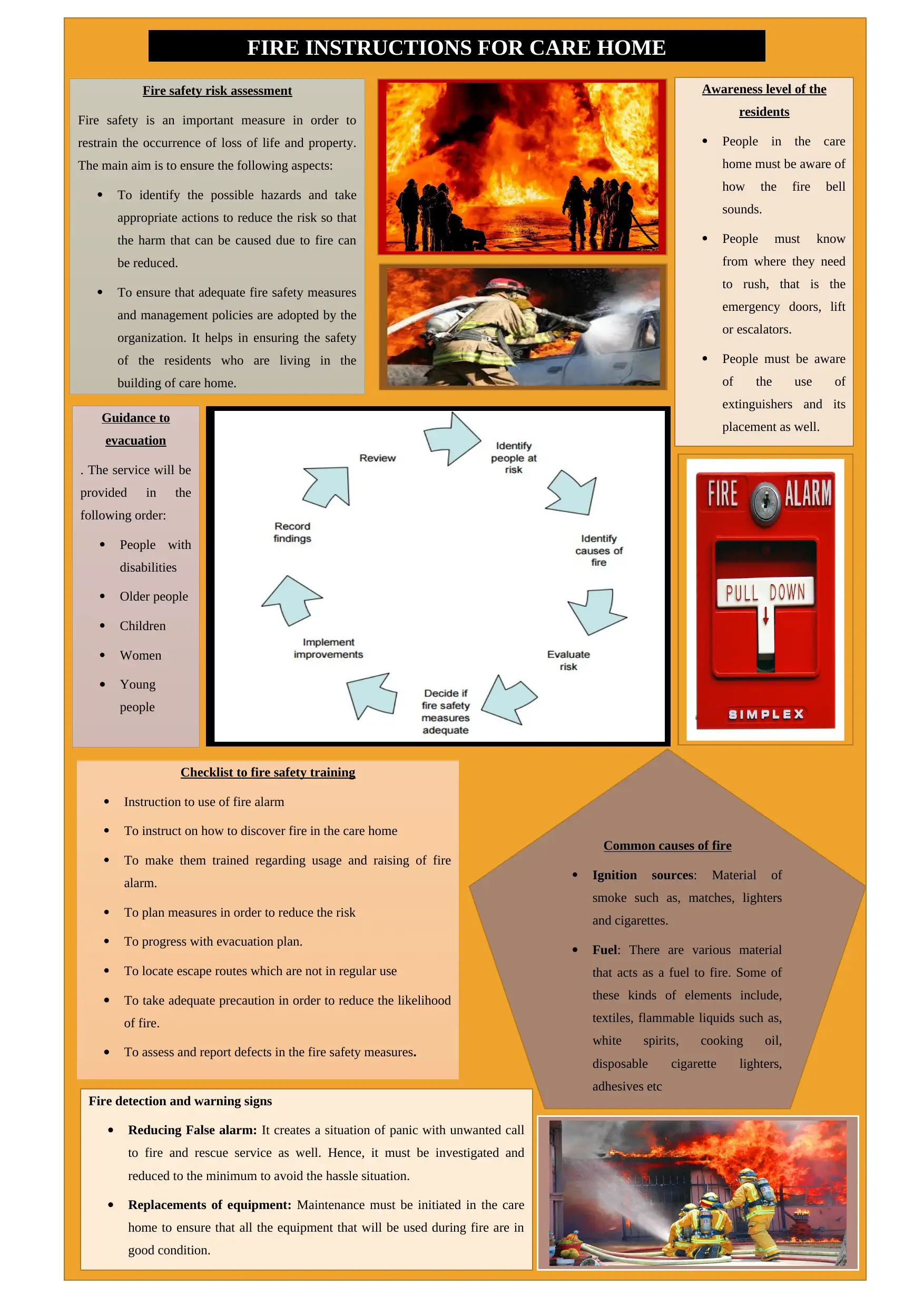Fire Safety in Care Homes: Risk Assessment, Training, and Procedures
VerifiedAdded on 2020/06/05
|1
|846
|51
Report
AI Summary
This report provides a comprehensive overview of fire safety protocols and procedures specifically tailored for care homes. It begins by emphasizing the importance of fire detection and warning systems, including measures to reduce false alarms that can cause unnecessary panic. The report stresses the need for regular equipment maintenance and replacement to ensure optimal functionality during a fire emergency. Detailed checklists for fire safety training are presented, covering instruction on alarm usage, fire discovery, risk reduction, evacuation planning, and the identification of escape routes. The report also outlines common fire causes, including ignition sources, fuel types, and oxygen, providing insights into potential hazards. Guidance on evacuation procedures prioritizes vulnerable residents such as people with disabilities, older adults, children, and women. Additionally, the report highlights the importance of resident awareness regarding fire alarms, emergency exits, and extinguisher usage. Finally, it underscores the significance of fire safety risk assessments to identify hazards, implement appropriate safety measures, and ensure the protection of lives and property within the care home environment.



![[object Object]](/_next/static/media/star-bottom.7253800d.svg)